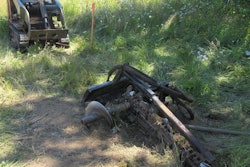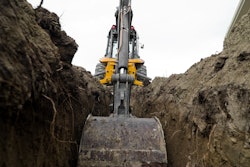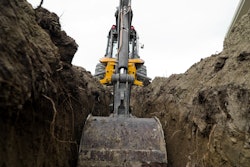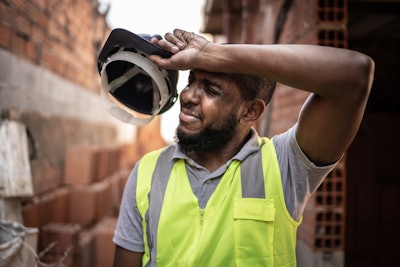
A contractor faces penalties of $12,098 after a worker died from heat illness while working on a construction site in Madison, Alabama, in extreme temperatures.
The 33-year-old worker had been an employee of SJ&L General Contractor LLC for only three days on July 28 when he arrived on the jobsite at 6:30 a.m. He was setting concrete forms by hand while waiting for concrete trucks. He was stumbling, so a foreman directed him to sit in his truck to cool off, according to online records for the U.S. Occupational Safety & Health Administration.
The trucks arrived at noon. Temperatures that day had reached 94 degrees with 85% humidity, leading to a heat index of 107 degrees, OSHA reports.
According to OSHA’s citation, workers had been exposed to extreme heat during 10-hour shifts for the two previous days in direct sunlight, as was the case on the day the worker died. On July 26, a worker experienced heat illness, including heat cramps and vomiting. On July 27, a worker suffered heat exhaustion, reported it to his foreman and left work early.
On July 28 after the concrete trucks arrived, the worker began smoothing out the curbing with a finish trowel. At 2 p.m., he was seen staggering, and a lead man assisted him to his vehicle, applied ice to him and called emergency services, according to OSHA. He had also been seen talking incoherently and vomiting. He later became unresponsive.
“The employee was unconscious but breathing upon the ambulance's departure from the site,” OSHA reports. According to an OSHA news release, he died two hours after being admitted to the hospital; however, the OSHA citation said he died enroute to the hospital.
SJ&L General Contractor LLC, which listed its physical address in Fayetteville, Tennessee, might have prevented the death “had the employer followed established safety practices for heat hazards,” OSHA says.
“OSHA investigators determined that SJ&L General Contractor LLC exposed this worker and 18 other employees to hazards of extreme heat while working outside in direct sun during their 10-hour shifts,” according to the news release.
SJ&L faced an initial penalty of $16,131, but that was later reduced to $12,098, according to OSHA online investigative records.
OSHA Area Office Director Joel Batiz in Birmingham, Alabama, lists the following requirements for employers with workers exposed to extreme heat or cold:
- Establish rest cycles
- Train workers in identifying signs and symptoms of weather exposure
- Ensure workers have time to acclimate to temperatures
- Implement and follow safety plans and ensure those plans are monitored.
OSHA notes that heat-related fatalities among workers increased 18.6% in 2022, rising from 43 to 51 since 2021.
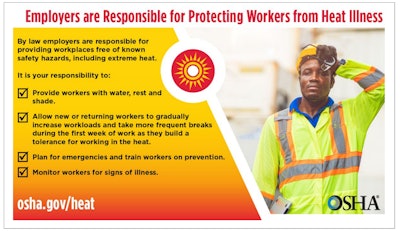
The OSHA citation listed the following abatement practices SJ&L must put in place by March 14:
- Designate a program administrator responsible for implementing the heat stress program at a specific indicator, wet bulb globe temperature or dry-bulb temperature.
- Acclimatize employees beginning work in hot environment or those returning from an absence period of three or more days. Establish clearly defined acclimatization procedures for returning employees and employees working where they are exposed to increased heat load.
- Encourage employees to drink a cup of cool water every 15 to 20 minutes rather than relying on thirst. For longer jobs that last more than two hours, also provide electrolyte-containing beverages.
- Establish specific-break schedules during high temperature conditions that are more frequent than regular break schedules. Ensure that these break schedules are followed and allow employees to take breaks when needed due to heat in the work environment.
- Provide a shaded area and other designated areas where heat-affected employees may take their breaks and recover.
- Establish a buddy system and monitor workers, for signs and symptoms of heat related illnesses, to better identify when workers need to be removed from the work area.
- Conduct in-person evaluations of employees complaining of heat-related illness symptoms and ensure supervisors are able to use physical and physiological indicators to determine when it is appropriate to remove an employee from work, arrange for immediate medical attention, or provide other assistance as necessary.
- Establish and provide an effective training program, for all employees, which includes the health effects associated with heat stress, symptoms of heat-induced illness, methods of preventing such illnesses, and actions that should be taken in the event a heat-induced illness is experienced in a language and manner that employees understand.
For more on combating extreme weather, check out Equipment World’s previous reports on working in the heat and working in cold weather.





